Best
OVERALL MANDOLIN
-
Overall: Sitka spruce top and an eye-grabbing figured maple back and sides.
-
Best Feature: Playable given the comfortable maple neck and bluegrass-ready, unbound, 14-inch-radius fingerboard with a short extension
-
TedScore™: 8/10
Best
AFFORDABLE
MANDOLIN
Electro
Acoustic
Mandolin AFFORDABLE, VERSATILE, COMFORTABLE
-
Overall: Bright, Crystal-Clear Tone Exudes In Abundance From A Spruce Top
-
Best Feature: Glide Seamlessly Across The New Zealand Pine Fretboard And Mahogany Neck
-
TedScore™: 9/10
Best
BEGINNER MANDOLIN
-
Overall: Spruce top with mahogany back and sides, offering fantastic resonan6ce and projection
-
Best Feature: Fishman Implant mandolin pickup is clear and strong and fit for any venue
-
TedScore™: 9/10
Since you’re reading this, I can assume that you have been wondering how many strings do mandolins have, right?
You might be surprised to learn that a standard mandolin has four sets of doubled metal strings, resulting in a total of eight strings. These strings are arranged in pairs, known as courses, which means you’ll be tuning and playing four sets of two.

The next question is how this happens. How do you play this musical instrument with that many strings? How do you tune it?
Don’t fret, my friend! (sorry – really bad joke…) This article specifically explains the basic things you need to know about mandolin.
Your journey with this instrument is not just about learning the strings, chords, and scales but also mastering the harmony and sound produced together by its multiple strings.
Understanding Mandolins as String Instruments
Mandolins are a fascinating member of the string instrument family, specifically the lute family.
With their compact body and short neck, mandolins are a favorite in folk and bluegrass music circles.
As a string instrument, the mandolin produces sound when its strings are plucked or strummed.
The vibrations from the strings resonate through the body of the instrument, creating that unique, bright sound that mandolin enthusiasts adore.
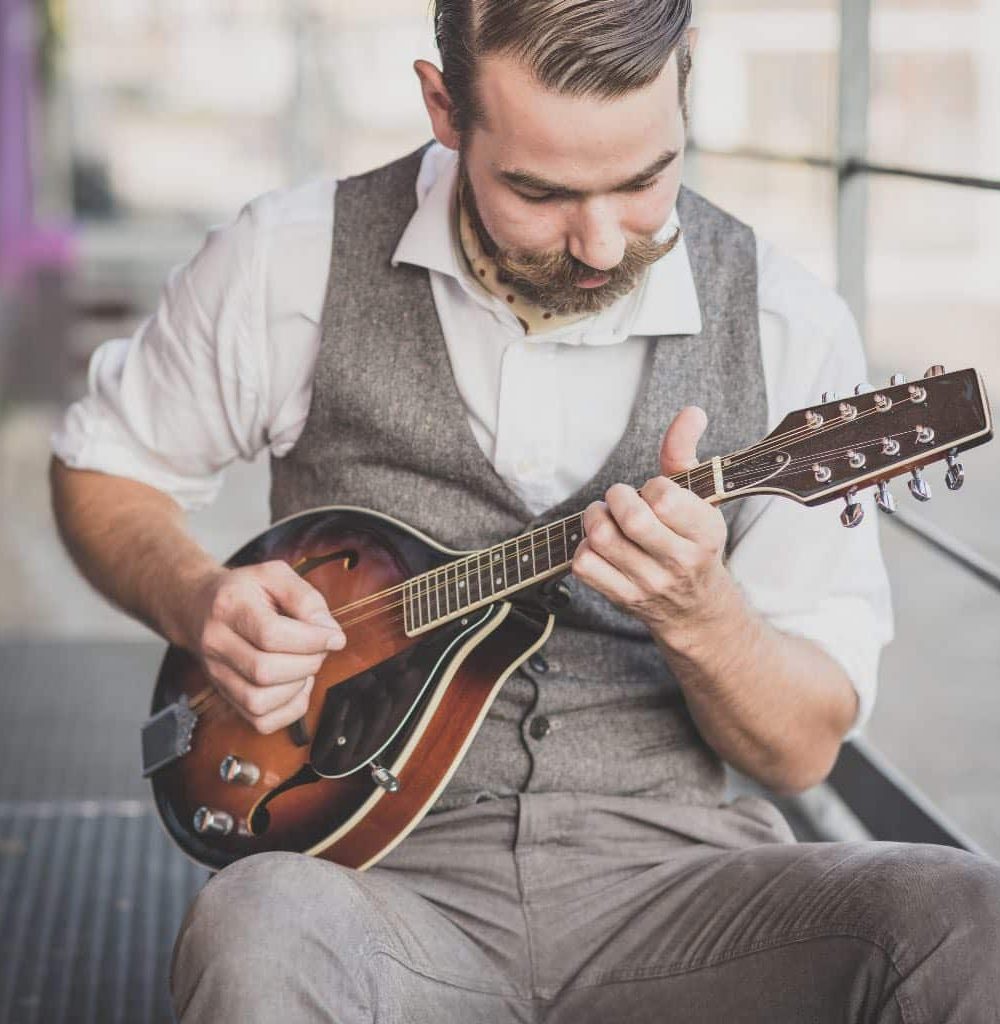
Physical Structure and String Arrangement of String Instruments
Now, let’s discuss the components and strings of a mandolin. Mandolins are a fascinating member of the string instrument family, specifically the lute family, and a unique example within the broader category of musical instruments.
Each component works harmoniously to produce the distinct, bright tones that mandolin aficionados love.
The Mandolin Neck and Body

Imagine holding a mandolin in your hands: your left hand caresses the neck, feeling the tension and smoothness of the mandolin strings under your fingers.
Called the mandolin neck, this part supports a fretted fingerboard and extends from the tuners at the head to meet the body—a hollow wooden box, or soundboard, that resonates to amplify the sound.
Its scale length, or the distance from the nut to the bridge, defines the spacing of frets and impacts the playability.
Beneath your right arm, the body of the mandolin rests. It often features a beautiful bowl-back design akin to a lute or a flat-back, common in bluegrass circles.
The body houses the iconic oval sound hole or sometimes f-shaped holes, which allows the instrument’s vibrant tones to dance into the air.
String Courses and
Tuning of Doubled Metal Strings
Your mandolin has 8 strings. These strings are configured in pairs, making what we call courses.
Most commonly, four courses of double strings are tuned in unison, giving you eight strings to play with.

The standard tuning is G4-D3-A3-E4, like a violin, but each string in the pair is struck together, creating that plucky, full sound. Similar to other string instruments, mastering the mandolin requires finger dexterity and hand coordination.
Mandolin Strings:
A Closer Look
Let’s take a closer look at those all-important mandolin strings.
Typically made of metal or nylon, these strings are designed to produce a bright and clear sound that cuts through any musical ensemble.

The standard tuning for a mandolin is G-D-A-E, similar to a violin, with each course of strings tuned to the same pitch.
This use of double strings, or courses, is a hallmark of the mandolin.
These paired strings create a fuller sound and stronger resonance, making the mandolin a beloved choice for both folk and classical music.
Whether you’re strumming a lively folk tune or a delicate classical piece, the mandolin strings deliver a rich and vibrant sound.
The Role of Double Strings in Mandolin Playing
The double strings on a mandolin are more than just a quirky design feature—they’re essential to the instrument’s unique sound. When you play a mandolin, each course of two strings is struck together, producing a rich and full sound that single strings just can’t match.
This setup allows for a greater range of tonal expression, making the mandolin incredibly versatile across different musical styles.
From intricate melodies to powerful chords, the double strings add depth and complexity to your music, making every note resonate with character and emotion.

Playing Techniques and Sound Production
The next thing we need to discuss is mandolin playing techniques! The following approach will help you produce beautiful music with your instrument.

Holding and Plucking
Hold your mandolin comfortably against your body. The neck should rest in your hand like you’re shaking hands with an old friend.
When plucking the strings or playing mandolin chords, a plectrum (or pick) becomes your trusty extension. Use the pickto strike the strings, creating that clear, bright sound mandolins are known for.
Experiment with different pick angles and strengths; they can drastically change your tone. A light touch will yield a softer sound, while a firmer pluck gives you a bold voice that stands out in a crowd.
Tuning for Optimal Sound
Tuning your mandolin string instruments is crucial for achieving that unique sound you crave. Each pair of strings is tuned in unison; the standard tuning is G3-D4-A4-E5.
Adjusting the tuning pegs, you balance bright jangle and rich sustain perfectly. Remember, slight variations in tuning can bring a creative twist to traditional sounds.
Whether rocking an octave mandolin or the mandriola with its additional strings, precise tuning is your foundation for captivating mandolin sounds.
Mandolin Variations: Exploring Different Models
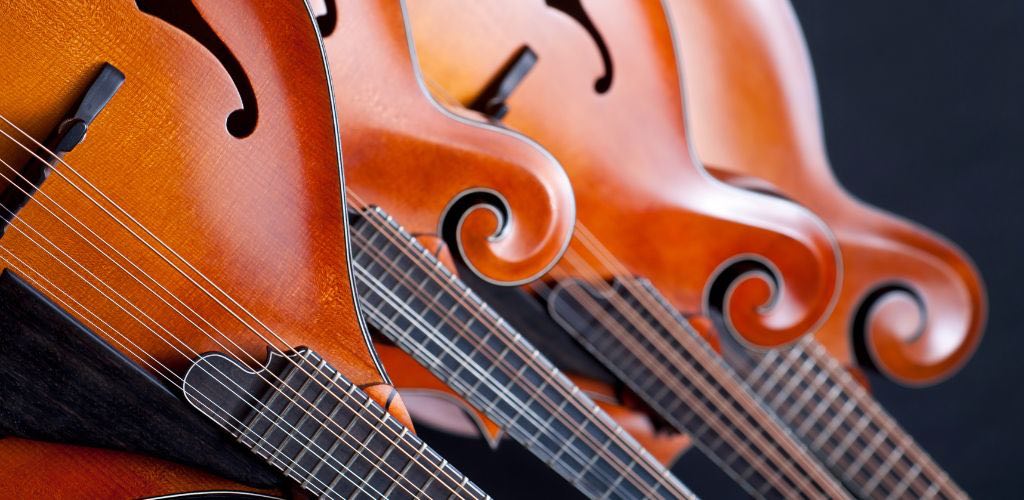
Mandolins come in various shapes and sizes, each with its own unique charm. The Neapolitan mandolin, also known as the Italian-style bowl-back mandolin, is famous for its warm and rich sound, perfect for traditional folk music.
On the other hand, the arch-top mandolin is known for its bright and clear tones, making it a favorite in bluegrass circles. Then there’s the flat-back mandolin, a more modern design that offers versatility and ease of play, suitable for a wide range of musical genres.
Each model has its own distinct characteristics, so whether you’re drawn to the classic bowl-back or the contemporary flat-back, there’s a mandolin out there that will resonate with your musical style.
The Benefits and Challenges of Mandolin Strings
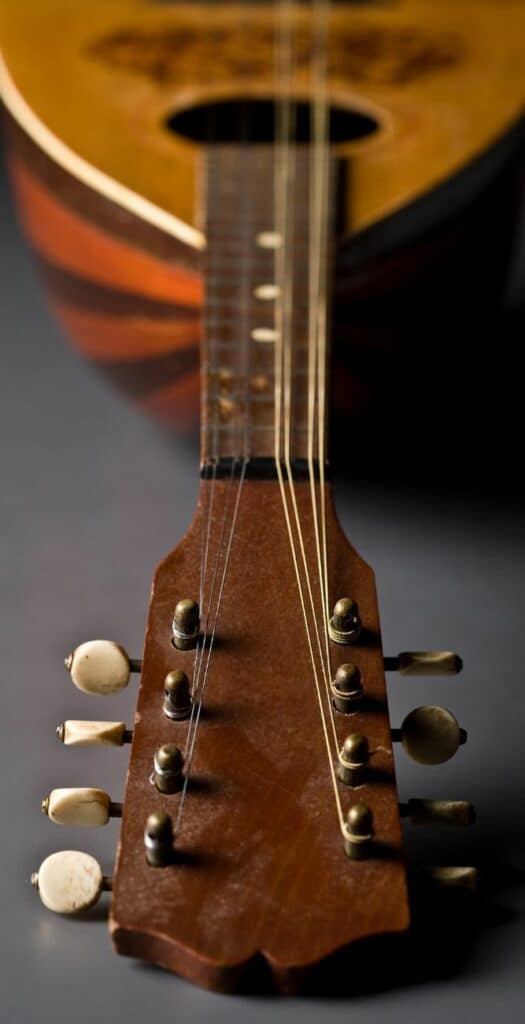
Mandolin strings offer a world of musical possibilities, but they come with their own set of challenges. The double strings provide a bright and clear sound with a wide range of tonal expression, making the mandolin a versatile instrument.
However, these double strings can be tricky for beginners. They require greater finger dexterity and hand coordination, which can be a bit daunting at first. Additionally, double strings are more prone to buzzing and rattling if not properly tuned or adjusted.
But don’t let these challenges deter you! With practice and proper maintenance, the benefits of mandolin strings—such as their rich, resonant sound and versatile playing style—far outweigh the initial hurdles.
So, embrace the challenge and let your mandolin strings sing!
Best Brands of
Electric Mandolin
The brand is crucial when hunting for a mandolin, affecting everything from sound quality to maintenance needs.
GIBSON
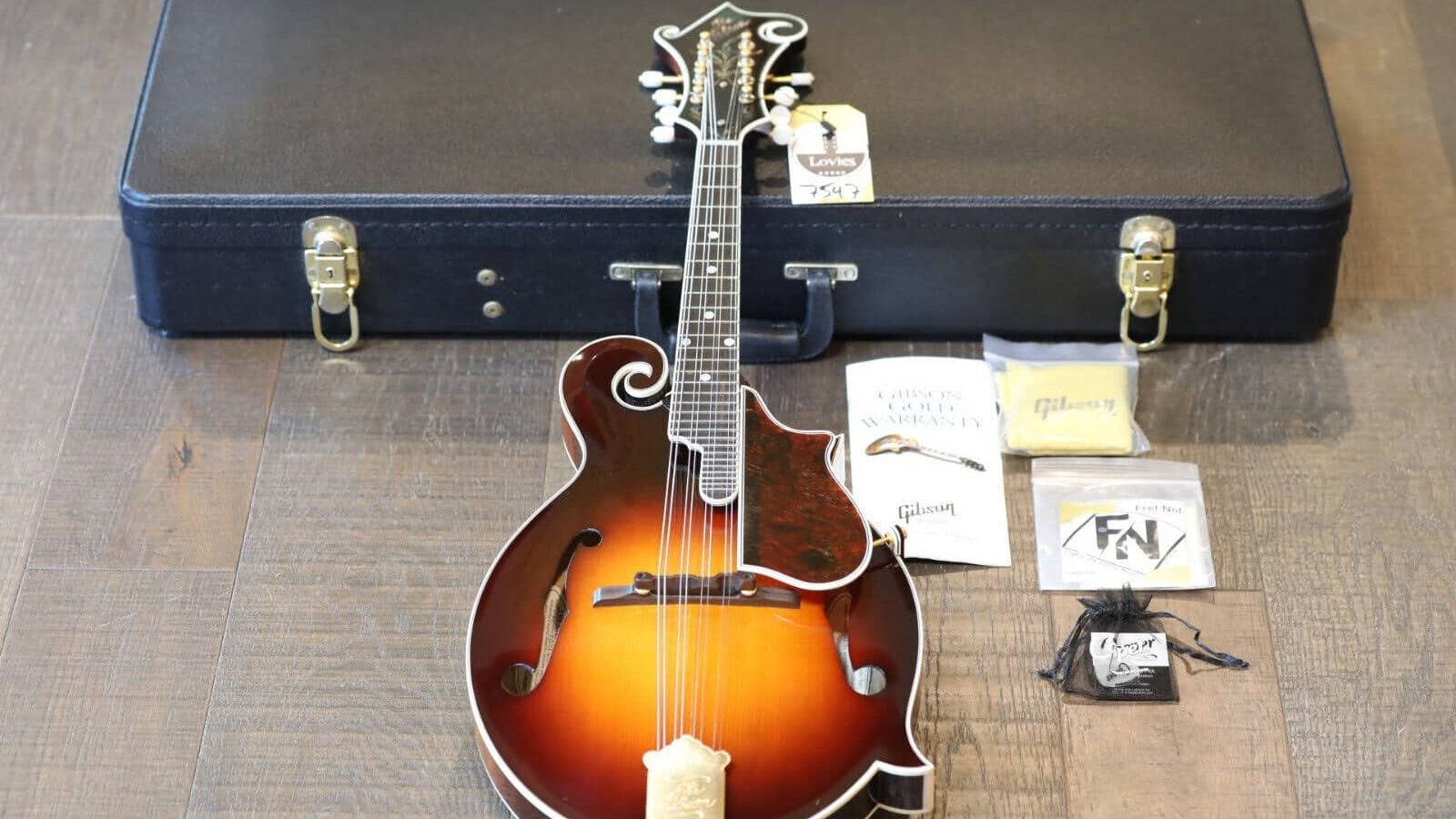
Gibson, a titan in the stringed instrument world, offers mandolins with phenomenal sound. They often have phosphor bronze strings contributing to a warm, rich tone.
The Gibson Custom F-5G Mandolin exudes exquisite craftsmanship with its rich, full-bodied sound and beautiful finish, making it a cherished instrument for its playability and visual appeal.
Gibson Custom F-5G Mandolin
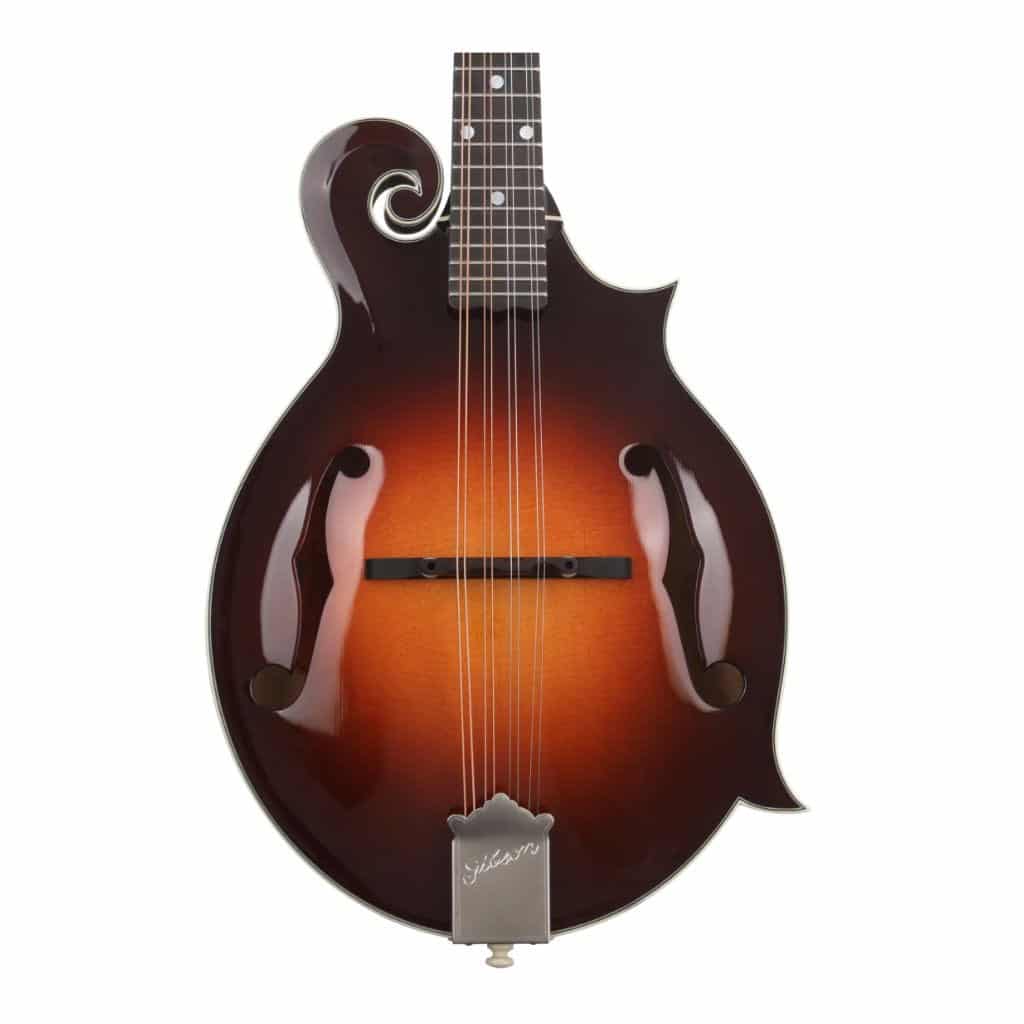
FEATURES: Sitka spruce top and an eye-grabbing figured maple back and sides.
OTHER INFO: Playable given the comfortable maple neck and bluegrass-ready, unbound, 14-inch-radius fingerboard with a short extension
- Light-catching gloss finish, dot fingerboard inlays, MOP headstock inlay, and multi-ply body binding
- Includes a form-fitting hardshell case
- Expensive in comparison to other mandolins
When you click ‘Check Price’, you’ll see there are loads of great places to buy this item. Our personal favorite is Sweetwater for the US, and Thomann and Gear4Music for the UK & Europe.
They are the largest music retailers, with excellent customer service, competitive prices, really fast shipping, and the longest guarantees.
The professional musician who wrote this article combined many things,
from the product build, manufacturer’s reputation through to feedback
from other users, to create our famous TedScore™.
FENDER

Fender is another trusted name. It blends quality with affordability and is perfect for beginners and seasoned players.
The Fender PM-180E Mandolin combines classic aesthetics f style with modern electronics, offering a crisp, punchy acoustic tone and the convenience of amplification for versatile performance options.
Fender PM-180E Mandolin
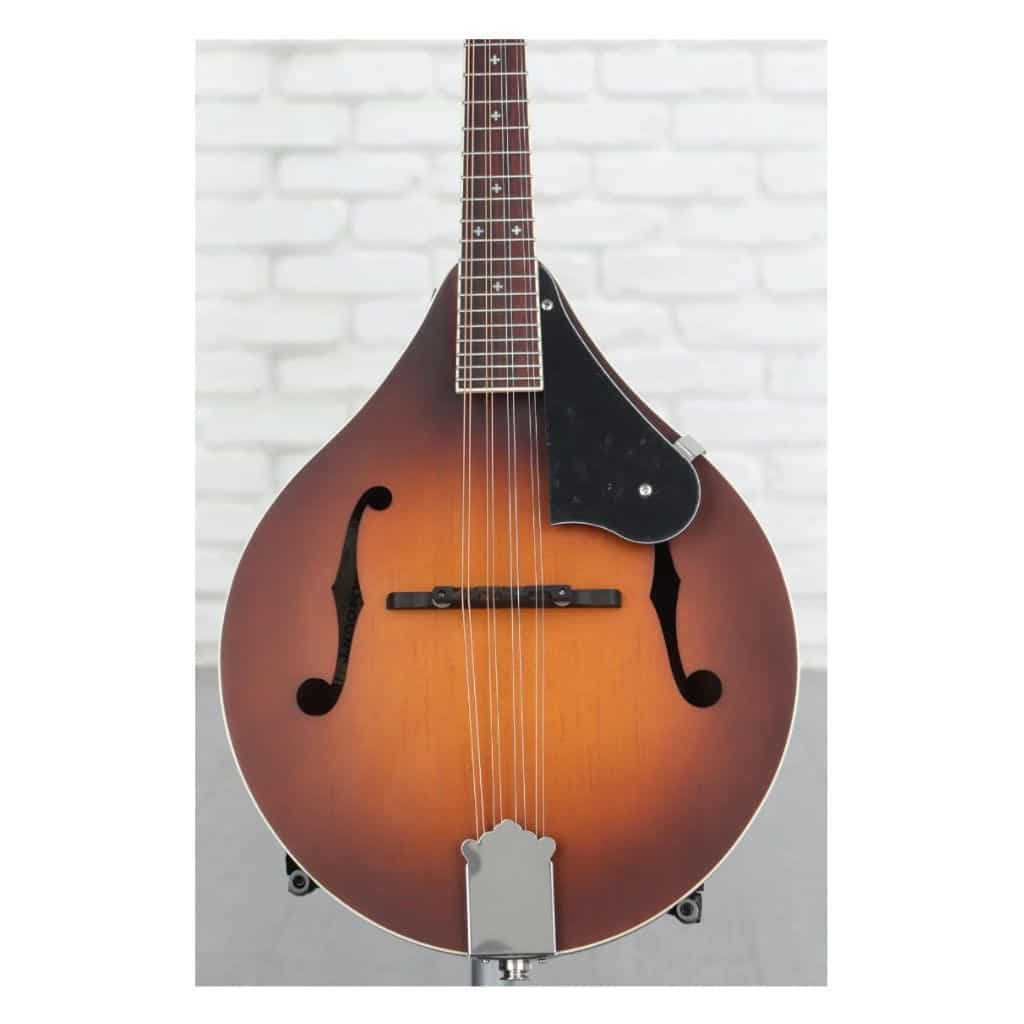
FEATURES: Spruce top with mahogany back and sides, offering fantastic resonance and projection
OTHER INFO: Fishman Implant mandolin pickup is clear and strong and fit for any venue
- The V-shaped maple neck is comfortable and allows for easy thumb-playing
- A-style body shape with dual f-holes creates a more traditional aesthetic
- No cons!
When you click ‘Check Price’, you’ll see there are loads of great places to buy this item. Our personal favorite is Sweetwater for the US, and Thomann and Gear4Music for the UK & Europe.
They are the largest music retailers, with excellent customer service, competitive prices, really fast shipping, and the longest guarantees.
The professional musician who wrote this article combined many things,
from the product build, manufacturer’s reputation through to feedback
from other users, to create our famous TedScore™.
EASTMAN
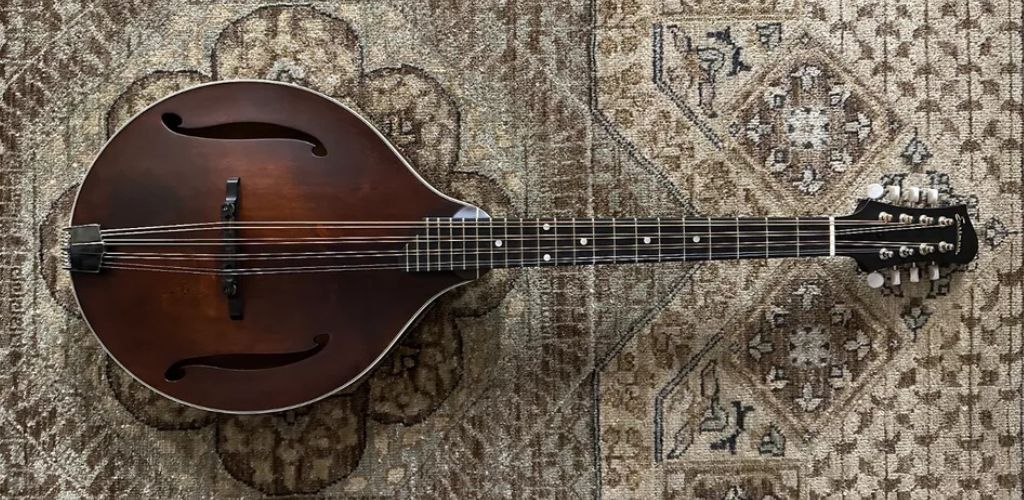
Eastman mandolins are a treat, often handcrafted and echoing tradition with their superb workmanship and sonorous brass strings.
The Eastman MDO305 Octave Mandolin impresses with its rich, deep tones and solid construction, providing a fantastic playing experience for those looking to explore the sonorous range of the octave mandolin.
Eastman MDO305 Octave Mandolin, A-Style, F-Holes
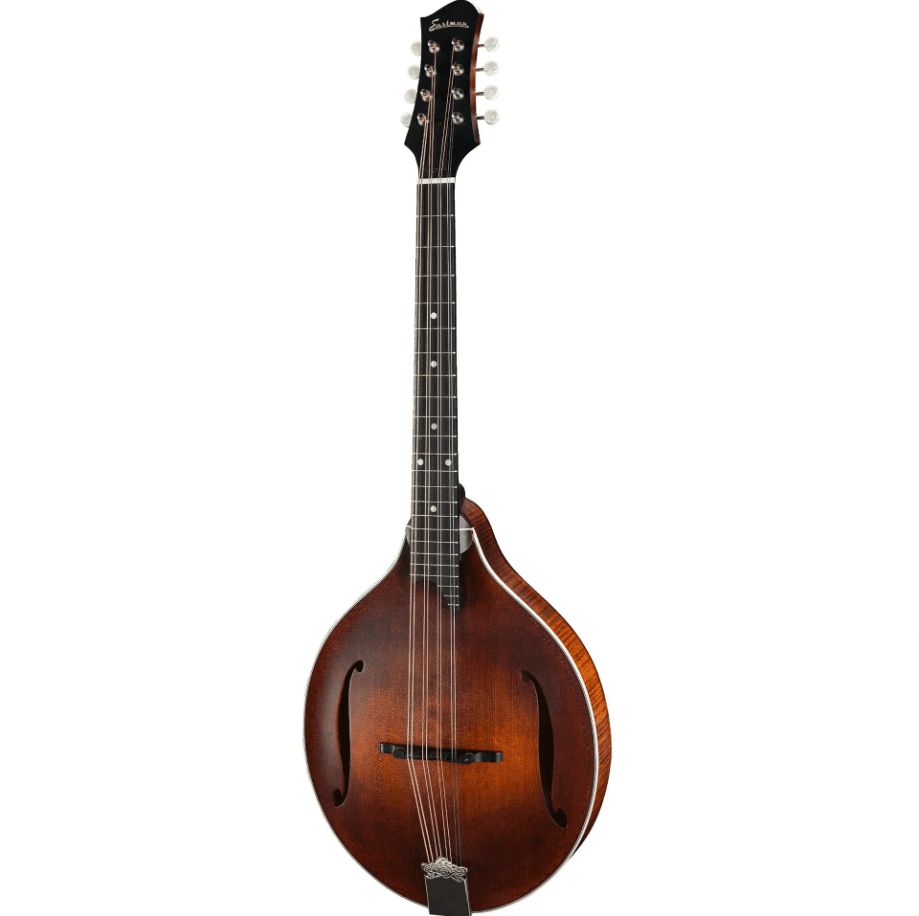
FEATURES: Solid maple back and sides for a warm and resonant tone
OTHER INFO: Adjustable truss rod for easy adjustments to the neck and action
- Excellent tone and projection and a beautiful finish
- Comes with a padded bag for protection during transport
- Higher price point than some other beginner octave mandolins
When you click ‘Check Price’, you’ll see there are loads of great places to buy this item. Our personal favorite is Sweetwater for the US, and Thomann and Gear4Music for the UK & Europe.
They are the largest music retailers, with excellent customer service, competitive prices, really fast shipping, and the longest guarantees.
The professional musician who wrote this article combined many things,
from the product build, manufacturer’s reputation through to feedback
from other users, to create our famous TedScore™.
KENTUCKY
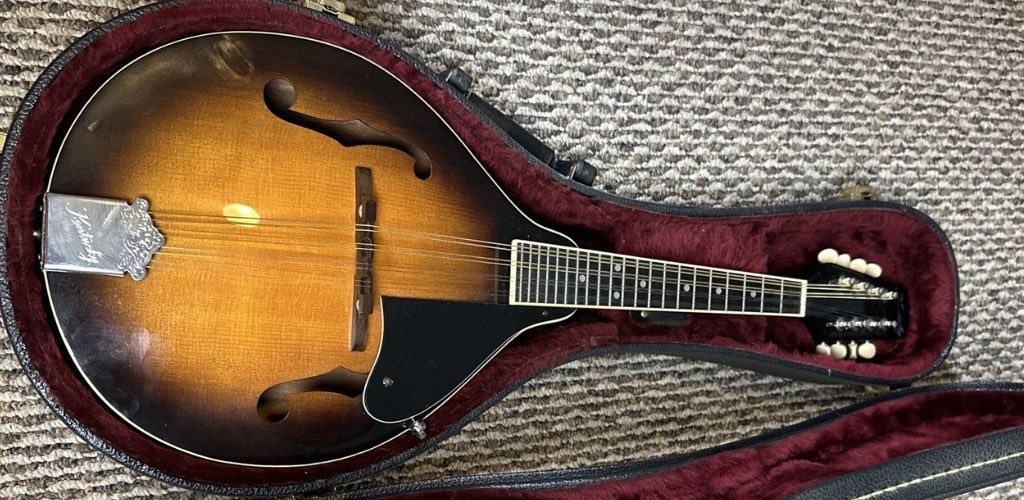
Venturing into the unique, Kentucky specializes in mandolin craftsmanship that balances historical design and modern playability.
The Kentucky KM-150 Standard A-model Mandolin offers a great balance of affordability and quality, with a warm, woody tone that makes it an excellent choice for both beginners and experienced players alike.
Kentucky KM-150 Standard A-model Mandolin - Sunburst

FEATURES: Solid German spruce top gives you clean articulation and a crisp, bright tone
OTHER INFO: Slim Alpine maple neck for comfortable, easy action
- Great tone and projection
- Classic sunburst finish
- Easy to play and comfortable to hold
- Some players may want to upgrade to a higher-quality instrument as they advance
When you click ‘Check Price’, you’ll see there are loads of great places to buy this item. Our personal favorite is Sweetwater for the US, and Thomann and Gear4Music for the UK & Europe.
They are the largest music retailers, with excellent customer service, competitive prices, really fast shipping, and the longest guarantees.
The professional musician who wrote this article combined many things,
from the product build, manufacturer’s reputation through to feedback
from other users, to create our famous TedScore™.
IBANEZ
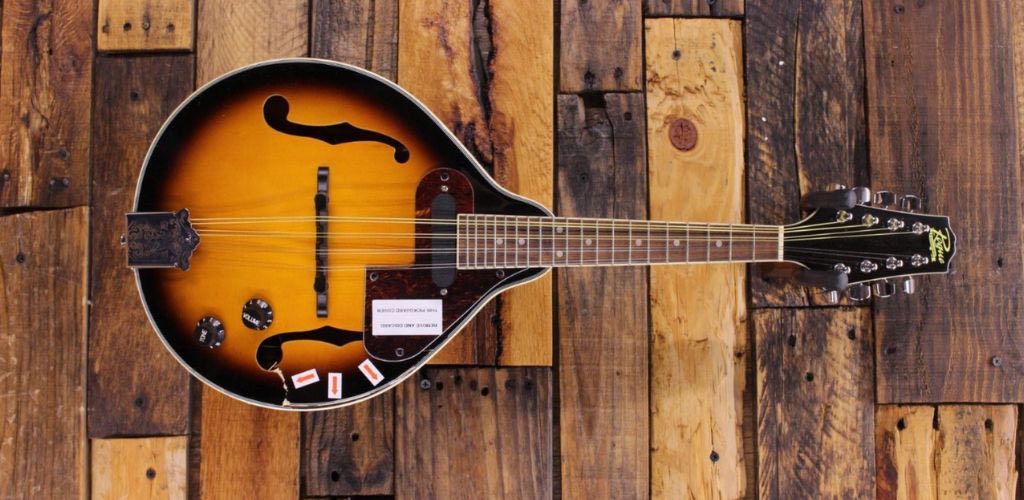
For those who prefer a milder sound, Ibanez offers mandolins that often accommodate nylon strings, giving you softer, mellower notes.
The Ibanez M510E Electro Acoustic Mandolin delivers a pleasing acoustic sound with the added flexibility of an electronic pickup, making it a solid and affordable option for those looking to amplify their mandolin playing.
Ibanez M510E Electro Acoustic Mandolin, Brown Sunburst

FEATURES: Bright, crystal-clear tone exudes in abundance from a spruce top
OTHER INFO: Glide seamlessly across the New Zealand pine fretboard and mahogany neck
- Affordable price point for a quality acoustic-electric mandolin
- Built-in pickup system allows for easy amplification and performance
- Comfortable and easy to play
- Doesn't come with a case or gig bag
When you click ‘Check Price’, you’ll see there are loads of great places to buy this item. Our personal favorite is Sweetwater for the US, and Thomann and Gear4Music for the UK & Europe.
They are the largest music retailers, with excellent customer service, competitive prices, really fast shipping, and the longest guarantees.
The professional musician who wrote this article combined many things,
from the product build, manufacturer’s reputation through to feedback
from other users, to create our famous TedScore™.
Remember, no matter your choice, each mandolin has its character, and every single string tells your story. Read some mandolin reviews and find the brand that resonates with you.
How Many Strings Do Mandolins Have:
Eight Strings to Remember!
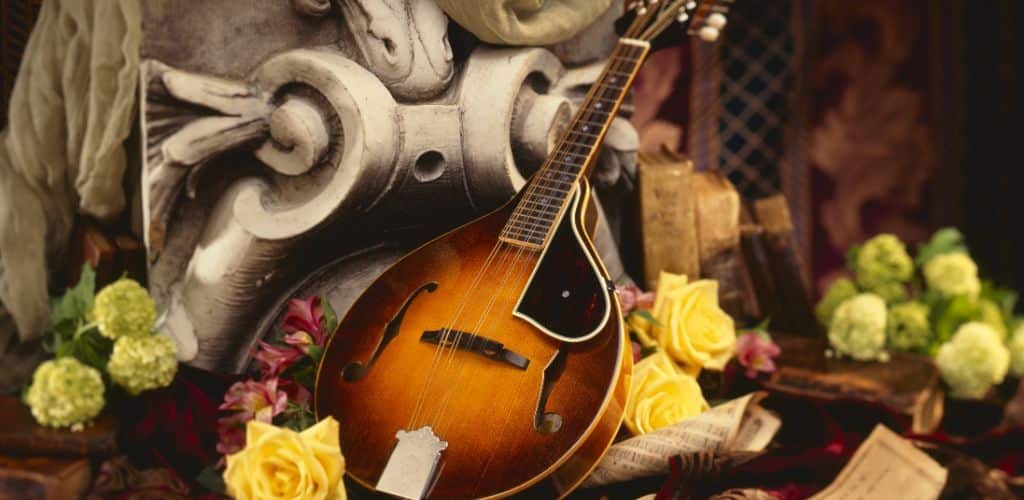
Your mandolin is a charming little stringed instrument with a rich history!
Typically, it boasts eight strings in four pairs to give it that distinctive, plucky sound.
When you strum the strings, you’re actually playing doubles. That’s right, each course has two strings tuned to the same note, which enhances that sweet, melodious ring.
Your standard mandolin, a Neapolitan or round-backed mandolin, is usually tuned like a violin.
Check out this simple table for its tuning:
| COURSE | NOTE |
|---|---|
| 1st (Highest) | E |
| 2nd | A |
| 3rd | D |
| 4th (Lowest) | G |
Some mandolins, like the octave mandolin, have a deeper tone and longer neck. You might even come across mandolins with ten or twelve strings!
No matter the mandolin, every strum will produce a joyous jingle. So pick it up, and let those strings sing!
That’s not all!
It’s great to know the parts and the strings of the mandolin. Now, the next thing you need to know is how to tune the instrument. Read this next article to know how!
FAQ's
Most traditional mandolins have eight strings arranged in four courses of two strings each, but some variants of loud mandolins, like the mandola or octave mandolin, may have a different number of strings or courses.
A 12-string mandolin, often tuned in courses of three strings, is called a mandriola.
Yes, there is a 10-string mandolin, typically arranged in five courses, known as a mandolino or liuto cantabile, which is less common but used in classical and folk music traditions.
Yes, on a mandolin, you typically strum single strings or pick both course strings simultaneously to produce a fuller, more resonant sound.



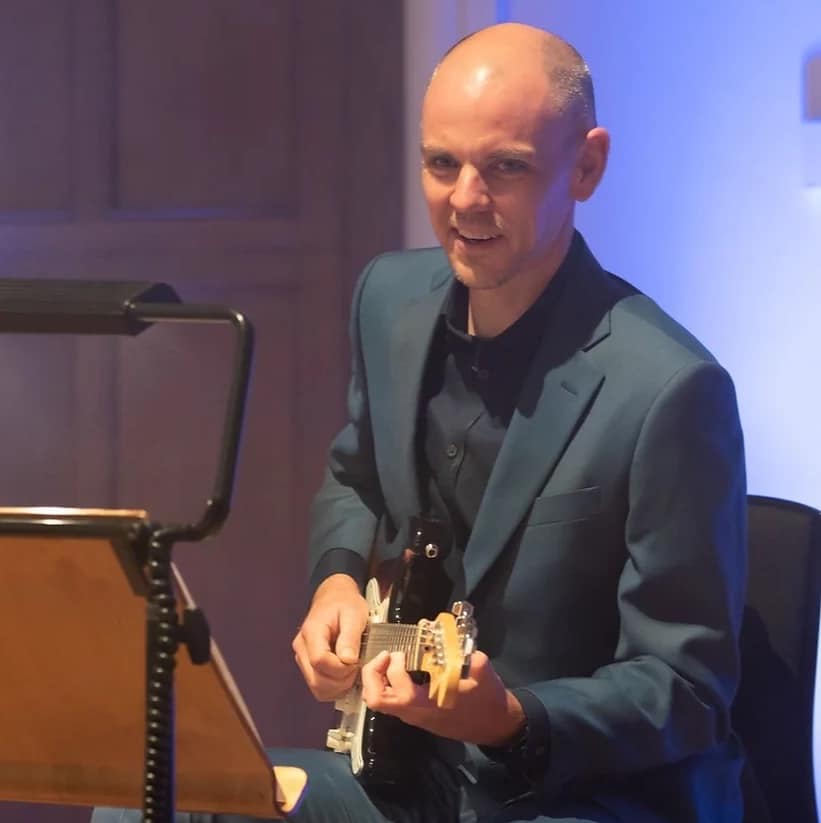






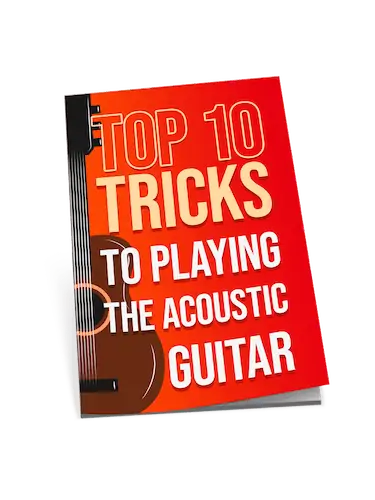
While the article refreshingly touches on the complexity of mandolin strings, it’s crucial to point out a minor discrepancy regarding the string materials. The mention of ‘doubled metal strings’ might mislead some to think that all mandolins use metal strings exclusively. It’s worth noting that classical and some folk mandolins often use gut or synthetic strings for a warmer, mellower sound. Not a grievous error, but an important distinction for readers deeply exploring the mandolin.
Really appreciate this deep dive into the mandolin world, Robert Emery! The section about the physical structure and string arrangement caught my eye. Always wondered how the doubled metal strings contributed to that distinct mandolin sound. Now I know it’s not just about the material but also the unique way they’re tuned and played. Makes me want to experiment more with my playing techniques to see if I can bring out more of the instrument’s character. Cheers for putting all this info out there.
hey, do you think these techniques could apply to a uke? kinda curious since they also got nylon strings right?